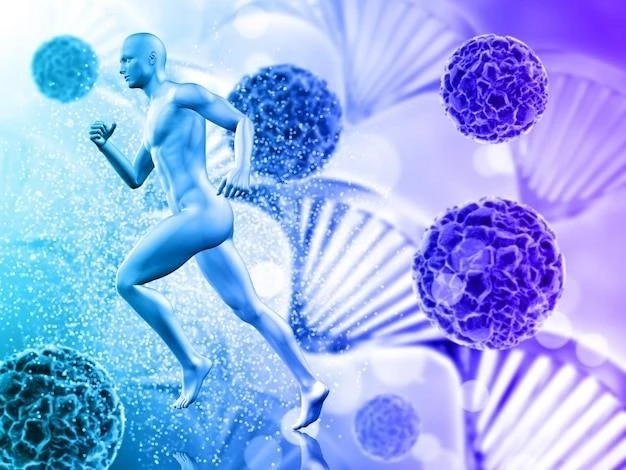Disease ー Dwarfism Syndesmodysplasia
This article aims to provide a comprehensive overview of Dwarfism Syndesmodysplasia‚ a rare genetic disorder characterized by skeletal anomalies affecting bone growth‚ joints‚ and limbs. Understanding the genetic basis‚ diagnosis‚ treatment approaches‚ management of joint complications‚ prognosis‚ quality of life considerations‚ and future research directions will be discussed.
Introduction to Dwarfism Syndesmodysplasia
Dwarfism Syndesmodysplasia is a rare genetic disorder that affects skeletal growth‚ resulting in short stature and various abnormalities in bone development. It is characterized by synostosis‚ dysplasia‚ and anomalies in the cartilage and joints‚ leading to limb deformities. This condition is caused by genetic mutations that impact the proper formation of bones and cartilage.
Individuals with Dwarfism Syndesmodysplasia may experience challenges related to mobility‚ joint function‚ and overall skeletal health. The diagnosis of this condition typically involves a thorough evaluation of the patient’s medical history‚ physical examination‚ imaging studies such as X-rays‚ and genetic testing to identify the specific genetic alterations responsible for the disorder.
Treatment approaches for Dwarfism Syndesmodysplasia focus on managing symptoms‚ promoting healthy bone growth‚ and addressing any associated complications. This may include orthopedic interventions‚ physical therapy‚ pain management strategies‚ and surgical procedures to correct limb abnormalities and improve overall function. The goal of treatment is to enhance quality of life and optimize the individual’s physical abilities.
Understanding the Genetic Basis
Dwarfism Syndesmodysplasia is primarily caused by genetic mutations that affect the development of bones and cartilage. These mutations lead to abnormalities in the growth plates‚ resulting in skeletal dysplasia and short stature. The specific genes involved in this condition play crucial roles in regulating bone formation and maintaining skeletal integrity.
One key aspect of the genetic basis of Dwarfism Syndesmodysplasia is the disruption of normal skeletal development pathways‚ leading to synostosis and joint anomalies. Mutations in genes responsible for cartilage and bone development can impact the structure and function of the skeletal system‚ contributing to the characteristic features of the disorder.
Researchers continue to investigate the underlying genetic mechanisms of Dwarfism Syndesmodysplasia to uncover new insights into the molecular pathways involved in bone growth and development. Understanding the genetic basis of this condition is essential for developing targeted therapeutic strategies that address the specific molecular defects responsible for the skeletal abnormalities seen in individuals with Dwarfism Syndesmodysplasia.
Skeletal Abnormalities in Dwarfism Syndesmodysplasia
Dwarfism Syndesmodysplasia is characterized by a range of skeletal abnormalities that affect bone growth‚ joint structure‚ and limb development. Common features include synostosis‚ where bones fuse together prematurely‚ leading to limb deformities and restricted movement. Dysplasia in the skeletal tissues can result in abnormal bone shapes and sizes.
Individuals with Dwarfism Syndesmodysplasia may exhibit anomalies in the growth plates‚ impacting longitudinal bone growth and causing disproportionate short stature. These skeletal abnormalities can influence the overall skeletal architecture‚ joint function‚ and limb alignment‚ leading to musculoskeletal issues and physical limitations.
The complex interplay of genetic factors contributing to skeletal anomalies in Dwarfism Syndesmodysplasia underscores the importance of early diagnosis and multidisciplinary management. Understanding the specific nature of the skeletal abnormalities present in this condition is crucial for implementing targeted treatment approaches that address the underlying bone‚ joint‚ and limb impairments.
Short Stature and Limb Anomalies

Short stature and limb anomalies are hallmark features of Dwarfism Syndesmodysplasia‚ a genetic disorder impacting skeletal growth and development. Individuals with this condition typically present with significantly reduced height due to abnormalities in bone growth and cartilage formation.
Limb anomalies in Dwarfism Syndesmodysplasia can manifest as disproportionate limb lengths‚ joint deformities‚ and restricted mobility. The skeletal dysplasia associated with this condition may result in limb abnormalities such as bowed legs‚ curved bones‚ or irregular joint alignments‚ contributing to functional limitations and physical challenges.
Understanding the complex interplay between short stature and limb anomalies is essential for comprehensive management of Dwarfism Syndesmodysplasia. Treatment strategies aim to address both the systemic issues related to growth abnormalities and the specific limb anomalies present in affected individuals‚ with the goal of optimizing physical function and quality of life.
Diagnosis of Dwarfism Syndesmodysplasia
The diagnosis of Dwarfism Syndesmodysplasia involves a comprehensive evaluation of the patient’s medical history‚ physical examination findings‚ and specialized tests to confirm the presence of skeletal abnormalities and genetic mutations associated with the condition. Healthcare providers typically assess growth patterns‚ limb proportions‚ joint function‚ and other physical characteristics to identify potential signs of the disorder.
Imaging studies such as X-rays or CT scans can provide detailed images of the skeletal system‚ revealing specific bone anomalies‚ joint fusions‚ and growth plate irregularities indicative of Dwarfism Syndesmodysplasia. Genetic testing plays a critical role in confirming the diagnosis by identifying the specific genetic mutations responsible for the disorder.
A multidisciplinary approach involving geneticists‚ orthopedic specialists‚ and other healthcare professionals is often necessary to establish a conclusive diagnosis of Dwarfism Syndesmodysplasia. Early and accurate diagnosis is essential for initiating appropriate treatment interventions and providing supportive care to manage the associated symptoms and complications effectively.
Treatment Approaches
The management of Dwarfism Syndesmodysplasia involves a multimodal treatment approach aimed at addressing the skeletal abnormalities‚ promoting healthy bone growth‚ and improving overall quality of life for affected individuals. Treatment strategies may include orthopedic interventions‚ physical therapy‚ pain management‚ and surgical procedures to correct limb deformities and enhance mobility.
Orthopedic interventions such as bracing‚ splinting‚ or joint surgeries may be recommended to address specific limb anomalies‚ joint fusions‚ or curvature of the bones associated with Dwarfism Syndesmodysplasia. Physical therapy plays a crucial role in improving muscle strength‚ joint flexibility‚ and overall functional capacity‚ helping individuals optimize their physical abilities.
Pain management strategies‚ including medications and therapeutic techniques‚ can help alleviate discomfort and improve the quality of life for individuals with Dwarfism Syndesmodysplasia. Surgical interventions may be considered for severe skeletal deformities or functional limitations that do not respond adequately to conservative treatments‚ with the goal of enhancing mobility and promoting overall well-being.
Management of Joint Complications
The management of joint complications in Dwarfism Syndesmodysplasia focuses on addressing the specific challenges related to joint abnormalities‚ limited range of motion‚ and potential pain or discomfort experienced by individuals with this genetic disorder. Orthopedic specialists play a key role in developing tailored treatment plans to optimize joint function and mobility.
Physical therapy and targeted exercises can help improve joint flexibility‚ strengthen supporting muscles‚ and enhance overall joint stability in individuals with Dwarfism Syndesmodysplasia. Assistive devices such as splints or braces may be recommended to support joint alignment and reduce the risk of joint contractures or dislocations.
In cases where joint complications significantly impact function and quality of life‚ surgical interventions may be considered to address severe joint fusions‚ malalignments‚ or ongoing joint pain. Collaboration between orthopedic surgeons‚ physical therapists‚ and other healthcare providers is essential for ensuring comprehensive management of joint complications and optimizing the long-term outcomes for individuals with Dwarfism Syndesmodysplasia.
Prognosis and Long-Term Outlook
The prognosis for individuals with Dwarfism Syndesmodysplasia can vary depending on the severity of skeletal abnormalities‚ joint complications‚ and overall response to treatment interventions. Early diagnosis and comprehensive management can significantly impact long-term outcomes‚ helping to improve quality of life and functional abilities.
With appropriate medical care‚ including orthopedic treatments‚ physical therapy‚ and pain management strategies‚ individuals with Dwarfism Syndesmodysplasia can experience improvements in joint function‚ mobility‚ and overall well-being. Regular monitoring by healthcare professionals is essential to address any emerging issues and adjust treatment plans as needed.
While Dwarfism Syndesmodysplasia is a chronic genetic disorder that requires ongoing medical attention‚ proactive management of skeletal and joint complications can help individuals lead fulfilling lives and minimize the impact of the condition on their daily activities. By implementing a multidisciplinary approach to care and emphasizing early intervention‚ the long-term outlook for individuals with Dwarfism Syndesmodysplasia can be optimized.
Quality of Life Considerations
Quality of life considerations are paramount in the comprehensive care of individuals with Dwarfism Syndesmodysplasia‚ as the condition can impact physical function‚ mobility‚ and psychosocial well-being. Addressing quality of life factors involves a holistic approach that considers both the medical aspects of the disorder and the individual’s overall health and happiness.
Supportive strategies such as psychological counseling‚ social services‚ and peer support groups can help individuals with Dwarfism Syndesmodysplasia manage the emotional and social challenges associated with their condition. Encouraging self-esteem‚ independence‚ and a positive self-image is essential for promoting a high quality of life in these individuals.
Educational and vocational support programs can also play a crucial role in enhancing the quality of life for individuals with Dwarfism Syndesmodysplasia‚ helping them achieve their personal and professional goals while navigating any physical limitations or societal barriers they may encounter. By addressing the holistic needs of individuals with this genetic disorder‚ healthcare providers can contribute to improving their overall quality of life and well-being.
Research and Future Directions
Ongoing research into Dwarfism Syndesmodysplasia is essential for expanding our understanding of the genetic mechanisms underlying this rare disorder and developing innovative treatment strategies to improve patient outcomes. Studies exploring the molecular pathways involved in bone and cartilage development aim to identify new therapeutic targets and interventions for individuals with this condition.
Future directions in Dwarfism Syndesmodysplasia research may focus on advancing genetic testing technologies to facilitate early diagnosis‚ predicting disease progression‚ and personalizing treatment approaches based on individual genetic profiles. Collaborative efforts between research institutions‚ healthcare providers‚ and patient advocacy groups play a crucial role in driving progress in the field and finding new solutions for managing this complex genetic disorder effectively.
By investing in research initiatives that investigate the pathogenesis of Dwarfism Syndesmodysplasia and explore novel therapeutic modalities‚ we can aim to enhance the quality of life for affected individuals‚ optimize treatment outcomes‚ and ultimately pave the way for a better understanding and management of this rare skeletal disorder in the future.
Conclusion
In conclusion‚ Dwarfism Syndesmodysplasia is a rare genetic disorder characterized by skeletal abnormalities‚ short stature‚ and joint complications that impact individuals’ quality of life. Understanding the genetic basis‚ diagnosing the condition early‚ and implementing personalized treatment approaches are essential for managing the complex manifestations of this disorder.
Through multidisciplinary care involving orthopedic specialists‚ geneticists‚ physical therapists‚ and other healthcare professionals‚ individuals with Dwarfism Syndesmodysplasia can receive tailored interventions to address their specific needs and improve functional outcomes. Research efforts aimed at elucidating the molecular pathways of the disorder and exploring novel therapeutic strategies hold promise for advancing the field and enhancing patient care.
By prioritizing quality of life considerations‚ supporting individuals with Dwarfism Syndesmodysplasia holistically‚ and fostering ongoing research collaborations‚ we can work towards improving the long-term prognosis and overall well-being of those affected by this rare genetic skeletal disorder. With continued dedication to patient care‚ research‚ and innovation‚ we strive to optimize outcomes for individuals living with Dwarfism Syndesmodysplasia.
